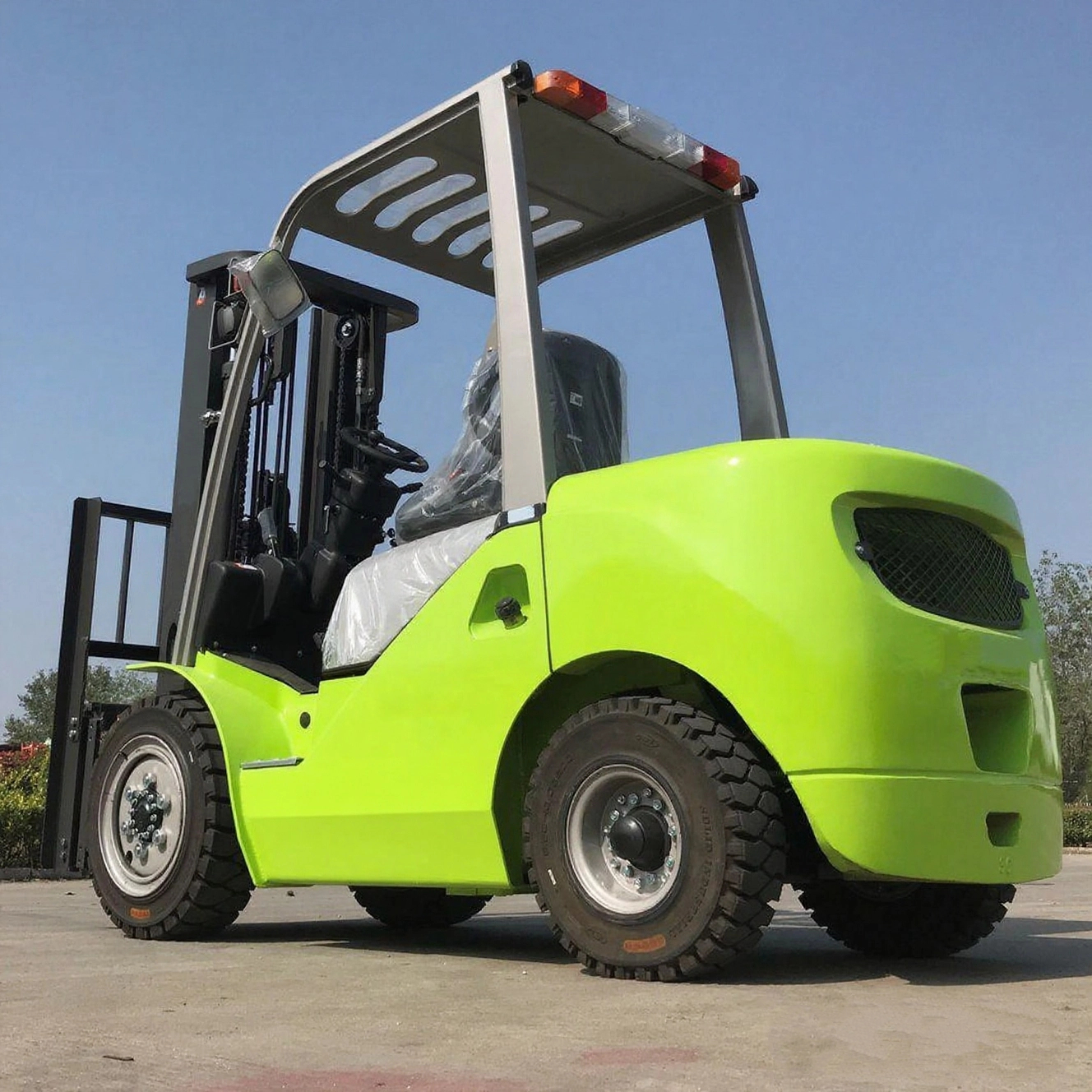Flowchart for Judging "Self-Inspection / Professional Handling" of Electric Forklift Faults
(Core Logic: Safety First → Basic Screening → Classified Judgment, Avoiding Risks of Unauthorized Operation)

Step 1: After a Fault Occurs, First Perform "Pre-Safety Operations" (Mandatory)
- Immediately park the forklift in a flat, obstacle-free, and pedestrian-free area.
- Pull the parking brake tightly; if there is cargo, unload it stably first.
- For electrical faults (e.g., smoke, alarms), additionally turn off the main battery switch.
- Confirm personal safety (no risk of oil leakage or electric leakage) before starting the judgment.
Step 2: Proceed to "Basic Self-Inspection" Judgment (Screen Step-by-Step According to the Following Branches)
Branch 1: Can the Fault Cause Be Located Through "Visual Inspection"?
- Judgment Criterion: The cause can be identified only by observing / checking external conditions, without disassembling any components.▶ Yes (Examples: Instrument shows "battery red zone" → battery dead; hydraulic oil below the scale line → insufficient oil level; charging plug not disconnected → failure to start)→ Execute "Self-Inspection Handling": Perform basic operations such as charging, refilling hydraulic oil, and reconnecting the plug. After operation, test whether the fault is eliminated.▶ No (Examples: Forklift fails to start but the instrument shows no abnormality; fork lifting jams and no external cause is found)→ Proceed to "Branch 2".
Branch 2: Can Normal Operation Be Restored Through "Restart / Simple Reset"?
- Judgment Criterion: Restoration can be attempted only through "restarting the power supply" or "no-load operation reset", without using tools.▶ Yes (Examples: Jamming during driving → returns to normal after turning off the power and restarting; tilting jams → returns to normal after repeatedly pulling the tilting handle under no-load to release air)→ Execute "Self-Inspection Handling": After restoration, test 3 times (driving, lifting, braking). If no abnormality is confirmed, continue using (record the fault time).▶ No (Examples: Still fails to start after restart; fault recurs after reset)→ Proceed to "Branch 3".
Branch 3: Is It "Obvious Damage to External Wearable Parts" (Only Need to Judge the Position, Do Not replace by Yourself)?
- Judgment Criterion: The damaged part is visible to the naked eye, and no disassembly of the internal structure is required.▶ Yes (Examples: Tire punctured with an obvious hole; anti-slip pad on the fork falls off; loose horn wire)→ Execute "Self-Inspection Recording": Only mark the position of the damaged part and inform maintenance personnel (do not replace the tire / connect wires by yourself).▶ No (Examples: Internal abnormal noise, oil cylinder leakage, no response from the brake pedal)→ Directly proceed to "Step 3: Professional Handling Judgment".
Step 3: "Professional Handling" Judgment (If Any Condition Is Met, Immediately Stop Self-Inspection and Contact Maintenance Personnel)
Scenario 1: Fault Involving "Core Safety Components"?
- Includes: Brake failure (no resistance when stepping on the pedal / parking brake cannot hold), stuck / deviated steering (ineffective after adjusting tire pressure), sudden loss of control during driving (failure of acceleration / deceleration).
- Conclusion: Immediately prohibit operation, hang the "Fault Out of Service" sign, and contact professional personnel.
Scenario 2: Fault Involving "Complex Electrical Components"?
- Includes: Motor smoking / abnormal noise, controller displaying fault codes (e.g., E01/E02), burnt smell from battery terminals, smell of burnt wires.
- Conclusion: Turn off the main battery switch, stay away from the forklift, and contact professional personnel (do not touch high-voltage components).
Scenario 3: Fault Involving "Hydraulic System Sealing / Pressure"?
- Includes: Oil leakage / dripping at the oil cylinder joint (not low oil level), slow fork lifting (still ineffective after refilling oil), failure of the tilting oil cylinder to reset.
- Conclusion: Prohibit operating the hydraulic handle to prevent hydraulic oil splashing, and contact professional personnel.
Scenario 4: Fault Is "Recurring" or "Cause Unidentifiable"?
- Includes: The same fault occurs ≥2 times a day (e.g., automatic shutdown after startup), vague fault symptoms (e.g., abnormal noise but unlocatable position).
- Conclusion: Record fault details (time, symptoms), stop using the forklift, and contact professional personnel to conduct inspection with diagnostic equipment.
Notes
- Self-inspection handling is only applicable to basic faults with "no safety risks and no disassembly operations"; faults beyond this scope shall all be classified as professional handling.
- After handling any fault, it is necessary to record the "fault phenomenon, handling method, and result" to facilitate subsequent prevention.

